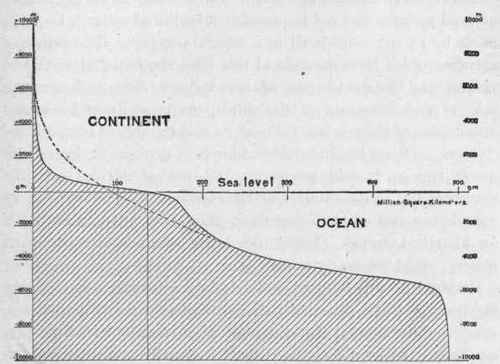A. Continental Deposits
Description
This section is from the book "An Introduction To Geology", by William B. Scott. Also available from Amazon: An Introduction to Geology.
A. Continental Deposits
The continental deposits may be classified in several different ways, each one of which has its advantages according to the object aimed at. Our present purpose will best be served by arranging these accumulations, in general, in accordance with the agency by which they are made. However, it is not feasible, nor even desirable, to carry out this scheme with rigid consistency, for so many deposits are formed by two or more agents acting together, wind and rain, ice and water, rivers and the sea, etc. Then, too, the various agents so often have shifting boundaries: on the seashore the tides, especially the spring and neap tides, make the limits of land and sea somewhat indefinite, while rivers, now confined to their channels, again are flooded so as to form great temporary lakes; the rare but violent rains of the desert may cover with a sheet of shallow water great areas which are ordinarily baked and cracked by the blazing sun. Owing to this shifting of limits and the alternation of agencies, continental deposits seldom display such uniformity over wide areas as obtains on the sea-bottom, where the conditions are so much more constant.
The land is the scene both of denudation and deposition, and which of these two processes shall prevail in any area depends upon the topography and the climate of that area. As is shown in the diagram, Fig. 83, only about one-fifth of the land surface is raised more than 1200 meters (about 4000 feet) above the level of the sea, and this fifth includes the regions of most active denudation; three-fifths, at successively lower levels, are areas of progressively less effective erosion, as we descend from higher to lower ground, while the remaining fifth receives deposits upon it. Nearly a fifth of the land of the globe is comprised in interior continental basins which have an arid climate and are without an outlet to the sea; some, indeed, like the lower Jordan valley and the Dead Sea, are far below the ocean level. Probably one-half of this desert and semi-desert area is the seat of extensive deposition. The areas of denudation and those of deposition are thus determined by climate and topography, and shift as those factors change or are modified by diastrophic movements of the earth's crust.

Fig. 83. - Diagram showing the relation between height and area of land above sea-level and of water in ocean basins. Vertical columns of figures indicate heights and depths in meters; on horizontal line, millions of square kilometers. (Penck).
Continue to:


